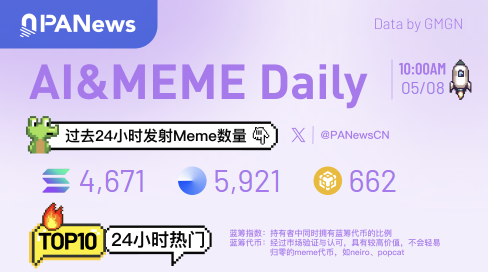a16z Partner: Why can stablecoins subvert cross-border payments?
By Chris Dixon , Partner at a16z
Compiled by: Felix, PANews
The internet has made information free and global. So why is it still so difficult and costly to transfer money?
The early internet promised a future where anyone could publish, build, or transact without permission. Protocols like email and the World Wide Web were open and neutral, allowing creativity, innovation, and entrepreneurship to explode. But things got off track along the way.
Today, the global financial system is like a patchwork of corporate networks: centralized, closed, and predatory. Behind every transaction is a Rube Goldberg machine of intermediaries, such as points of sale, payment processors, acquiring banks, issuing banks, local banks, agent banks, foreign exchange exchanges, credit card networks, etc. Each institution extracts commissions, adds delays, and imposes rules. These networks impose unnecessary taxes on business activities and inhibit innovation. They turn channels that should be neutral into high-friction bottlenecks.
Stablecoins, cryptocurrencies pegged to stable assets like the dollar, are a way out, a reset — a way to bring the original vision of the internet to money.
The disruptive opportunity of stablecoins
The current payment system was not built for the internet — it was built for a world filled with fee-paying middlemen (who played a role in managing local collaboration, fraud prevention, and operations). Even today, international remittances can cost as much as 10% in fees (the average fee for a $200 remittance was 6.62% in September 2024). These are more than just frictions — they are actually regressive taxes on some of the world’s poorest workers. The inherited system is slow, opaque, and exclusive, leaving billions of people underserved or even completely isolated from the global financial system.
Traditional payment methods are extremely inefficient for many businesses. Stablecoins can significantly improve this situation. B2B payments from Mexico to Vietnam typically take 3 to 7 days to clear, cost between $14 and $150 per $1,000 transaction, and go through up to five intermediaries along the way, each of which takes a percentage of the commission. Stablecoins can bypass traditional systems such as the international SWIFT network and the associated clearing and settlement processes, making such transactions virtually free and instant.
This isn’t just theoretical—it’s already happening. Companies like SpaceX are using stablecoins to manage their corporate funds (including repatriating funds from countries like Argentina and Nigeria where the local currency is volatile). Companies like ScaleAI are using stablecoins to pay employees around the world faster and cheaper. Meanwhile, in the B2C (business-to-consumer) space, Stripe is the first widely available cryptocurrency payment service, charging a 1.5% commission, half the cost of traditional payment methods. This could significantly increase profit margins for some businesses: as a16z partner Sam Broner points out, for a business like grocery stores with very low margins, a 1.5% margin improvement could potentially double net revenue. (And in competitive, blockchain-based markets, transaction fees are expected to drop even lower).
Unlike the old financial system, which developed in “islands,” stablecoins are global by default. They run on blockchains: open, programmable networks that anyone can build. No need to negotiate with dozens of banks across borders, just plug into the network. People are already realizing the advantages. In 2024, stablecoin transactions reached $15.6 trillion, comparable to Visa’s volume. While this number primarily represents money flows (not retail payments), its scale still suggests that we are on the verge of a transformation in financial infrastructure that does not rely on a patchwork of 20th-century systems.
Instead, we can build something entirely new, something truly internet-native — or what Stripe calls “room-temperature superconductors for financial services,” where instead of lossless energy transfer, we achieve lossless value transfer.
The “WhatsApp” Moment in Money
Stablecoins give us our first real opportunity to make money open, instant, and borderless, just as email revolutionized communications.
Think about the evolution of text messaging. Before apps like WhatsApp, sending a text across borders meant paying 30 cents per message. And you were lucky if it got there at all. Then came internet-native messaging apps: instant, global, free. Payments today are like messaging in 2008: divided by borders, encumbered by middlemen, and controlled by gatekeepers.
Stablecoins offer a radically new alternative. Rather than cobbling together a clunky, expensive, and outdated system, stablecoins flow seamlessly on a global blockchain. These systems are programmable, composable, and designed to scale across borders. Stablecoins have already dramatically reduced the cost of remittances: sending $200 from the U.S. to Colombia using traditional methods costs $12.13; using a stablecoin, the fee is just $0.01. (The fees for converting stablecoins to local currencies range from 0-5%, and prices continue to fall as competition increases).
Just as WhatsApp disrupted expensive international calls, blockchain payments and stablecoins are transforming global remittances.
Supervision: From bottleneck to breakthrough
It’s easy to see regulation as an obstacle, but smart legislation is the key to solving the problem.
Establishing clear rules for stablecoins and crypto markets could finally allow these technologies to move out of the sandbox and toward wider adoption. For years, DeFi has been trapped in a closed, circular, coin-to-coin economy. Not because these tools are useless, but because regulators make it difficult for them to enter the traditional financial system.
That’s changing. Policymakers are actively working on rules that recognize and regulate stablecoins to keep the United States competitive, protect consumers, and allow innovation to flourish. Careful regulation—such as a framework that distinguishes between network tokens and security tokens—can protect against bad actors while providing clear guidance for those who comply. In fact, an upcoming bill to clarify the rules could pave the way for broader adoption and integration into the global financial system.
Building public goods that benefit everyone
Traditional finance is built on private, closed networks. But the Internet demonstrates the power of open protocols (like TCP/IP and email) to drive global collaboration and innovation.
Blockchains are the native financial layer of the internet. They combine the composability of public protocols with the economic power of private enterprise. They are credibly neutral, auditable, and programmable. Adding stablecoins on top of them gives you something you’ve never really had: an open money infrastructure.
Think of it like the public highway system. Private companies can still build vehicles, conduct business, and create roadside attractions. But the roads themselves are neutral and open to everyone.
Blockchain networks and stablecoins are doing more than just reducing fees. They are giving rise to new categories of software:
- Programmatic payments between machines: Marketplaces powered by AI agents automatically broker transactions for computer resources and other services.
- Micropayments for media, music, and AI contributions: Just set some simple rules for your budget and let a “smart” wallet disburse payments.
- Transparent payments with full audit trails: Use these systems to track government spending.
- Global trade without cumbersome intermediaries: Instant settlement of international transactions at extremely low cost - in fact, it has already happened.
The era of blockchain networks and stablecoins has arrived: technology, market demand, and political will are converging to make these applications a reality. A stablecoin bill could be passed this year, and regulators are weighing a framework that matches risk with the right regulation. Just as early internet startups thrived when it became clear they wouldn’t be shut down by telecom companies or copyright lawyers, cryptocurrencies are ready to cross the chasm from financial experimentation to critical infrastructure, and stablecoins will lead the way.
Instead of patching old systems, you can rebuild better systems.
Related reading: In-depth research report on stablecoin payments: Reconstructing a trillion-dollar industry and opening a new era of borderless finance
También te puede interesar

Ai&Meme Daily, a picture to understand the popular Ai&Memes in the past 24 hours (2025.5.8)

BlockchainFX ($BFX) Is The Best Crypto Presale With 500x ROI
